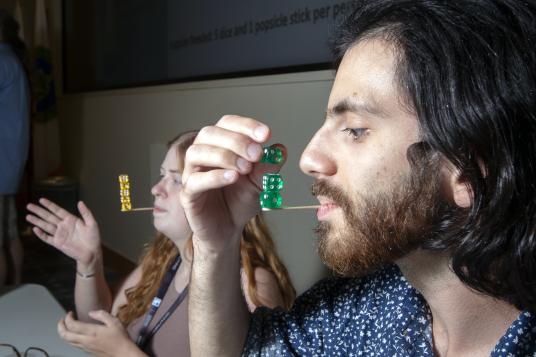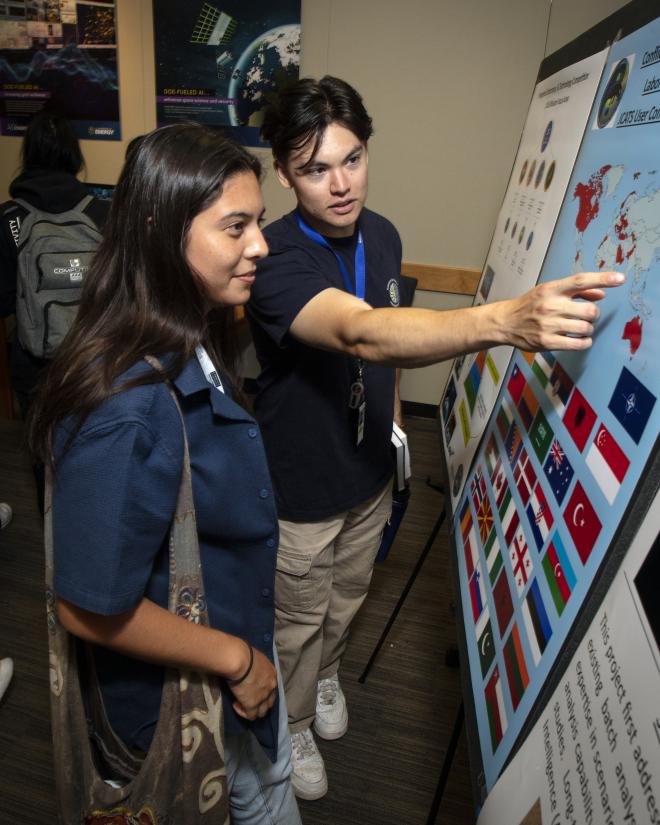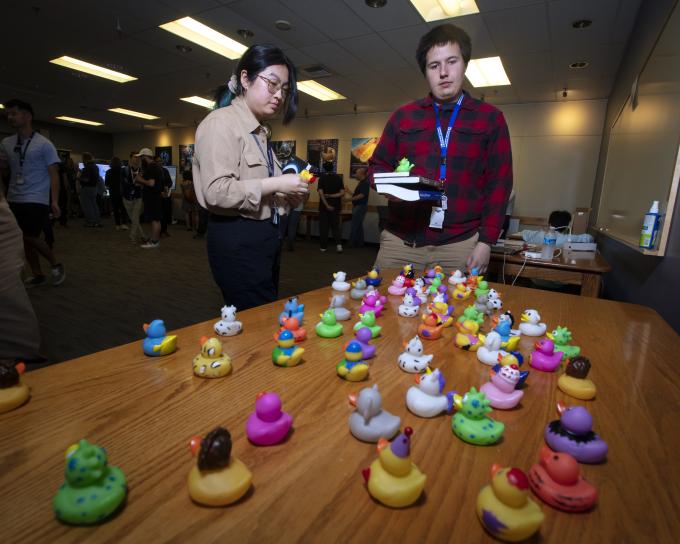Disclaimer: This article is more than two years old. Developments in science and computing happen quickly, and more up-to-date resources on this topic may be available.
Computing’s annual Developer Day is back in its seventh year with a brand new format. For the first time, this year’s Dev Day was actually composed of two developer days.
On June 14 and 15, more than 90 developers from across the Lab gathered to discuss their ongoing projects, challenges, and opportunities for growth. The new format—two half-days, one virtual, one in person—was Dev Day’s response to hybrid and fully remote events, ensuring all participants a first-class experience.
Approximately 50% of Computing staff have been at the Lab for less than five years. With the COVID-19 pandemic making up three of those years, many of these new employees have never met any of their colleagues in person. This served as inspiration for the new format. Kyle Dickerson—a co-organizer of the event, along with David Beckingsale, Geoff Cleary, and Kristi Belcher—said he hoped the in-person half-day would encourage team members who are not typically on site to come out and use their free morning for meetings and teambuilding activities that are less effective when conducted virtually.
“After so many years of video cameras and microphones, we really wanted an event that encouraged interaction with each other and didn’t feel like it could have been an email,” Dickerson said.
(Mostly) Technical Lightning Talks
Following Dickerson’s brief opening remarks, Dev Day kicked off with a series of five-minute virtual lightning talks. Members of the Computing community updated their peers on their recent projects, with topics including from IT tools to combat simulators and from data searchability to atmospheric dynamics.
Rounding out the technical lightning talks was a pair of presentations focusing on inclusion, diversity, equity, and accountability, both by computer scientist Mark Miller. Miller discussed efforts to eliminate the use of “master/slave” terminology—which appears in millions of lines of code on GitHub, despite appeals to replace it starting in the mid-1990s—and provided guidelines on how to better practice inclusivity in open-source software projects.
Survey Results and Opportunities
This tone of collaboration and inclusivity also carried through computer scientist Vanessa Sochat’s delivery of the first annual Lab Developer Survey results. Wearing a unicorn horn and surrounded by colorful lights, Sochat acknowledged that life is not all rainbows, but “if our developers are happy, they’re going to be doing better work,” she said.
The survey, conducted at the end of 2022, received over 100 responses, helping Sochat obtain what she calls the Lab’s “developer heartbeat.” Her goal is to understand which tools and resources her colleagues need in order to feel successful and supported at the Lab. To this end, Sochat identified a handful of actionable items from common patterns in the survey responses to help improve developer happiness.
“What I’ve noticed throughout my career is that a single person can have a lot of impact. Often, when you want to see change, you can do things to make that happen,” Sochat said. “Sometimes, you just have to lean a little bit in a different direction, take just one little step, and slowly, over time, these little steps actually turn into big change.”
As the virtual day wrapped up, the air of optimism continued, with John Grosh, Computing’s deputy associate director for mission development, moderating a panel about Lab research opportunities for software developers. The panel featured Kathryn Mohror presenting LLNL’s Office of Science programs, Kenny Weiss discussing software opportunities in the Advanced Simulation and Computing program, and Erik Draeger representing Computing and the RADIUSS project.
“When you think about software, it’s almost as important as oxygen to the functioning of the Lab,” Grosh said.
Games, Books, and Ducks
The second day of Developer Day was in person, less formal, and more focused on fun and team building.
A set of LLESA-sponsored activities encouraged the developers to get to know each other on a wide variety of topics, ranging from what their first programming language was to their top three favorite snacks, and challenged them to put their technical skills to physical tests, like balancing dice on popsicle sticks held in their mouths and tossing ping-pong balls backward into a partner’s cup.
The group then migrated to a Tech Expo—another new aspect to Dev Day. Here, they had the opportunity to solve for the output of a “mystery program,” view interactive demonstrations from their peers, and see displays of Livermore Computing’s long-term tape storage hardware as well as a Sierra supercomputer cluster node. Copies of the books The Pragmatic Programmer: From Journeyman to Master, by Andrew Hunt and David Thomas, and Staff Engineer: Leadership Beyond the Management Track, by Will Larson, were available for everyone to take, providing attendees with the opportunity to work on their technical growth and soft skills beyond the event.
They also had the chance to adopt a rubber duck, an allusion to a philosophy introduced in The Pragmatic Programmer known as rubber duck debugging. This debugging technique encourages developers to describe a problem they’re encountering out loud to a rubber duck. For many, the process of explaining a problem is enough for them to discover the solution.
“Adopt a duck today to keep a faithful companion on your desk,” a sign at the duck table read. “Always ready to listen to your travails and provide its wisdom to you in the form of eternal silence—or the occasional squeak.”
In a way, the ducks’ promise of companionship and developer wisdom is a fitting symbol of Dev Day’s goals as a whole.
Past coverage of Developer Day can be found on this website.
—Anashe Bandari






